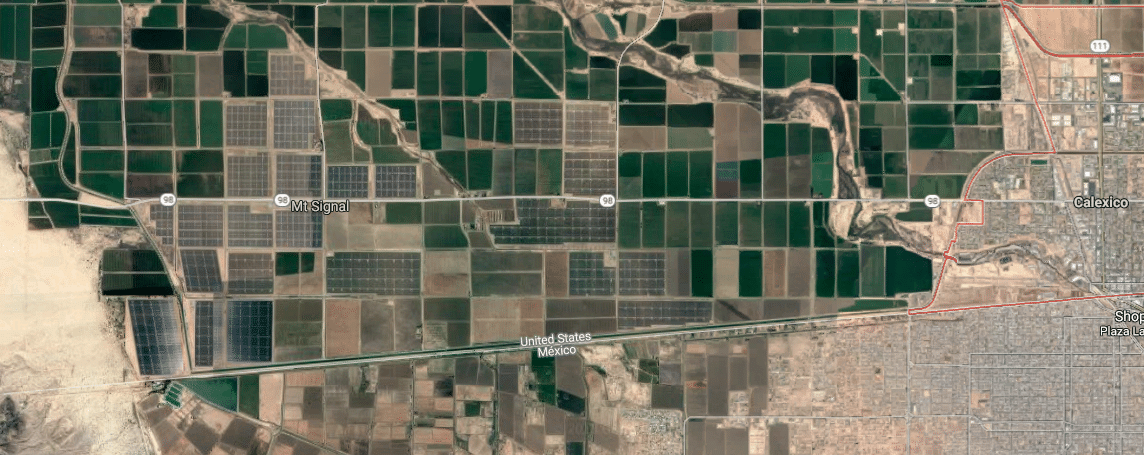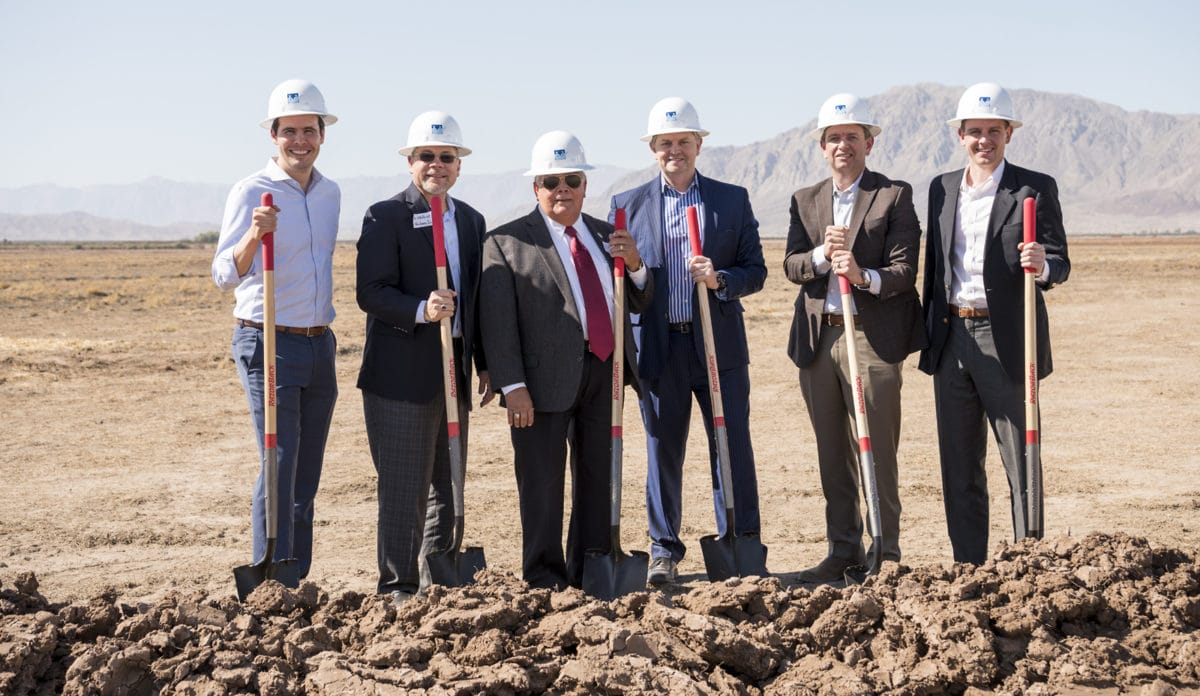As California leads the nation’s push to renewable energy, many parts of the state have seen intense development. Leading these regions is California’s Imperial Valley, and perhaps no route been transformed to the same degree as the area along California state route 98 west of Calexico.
Here the irrigated green of farmlands gives way seemingly endless rows of blue-black PV modules, lining both sides of the highway just north of the Mexico border. A stretch of only a few miles hosts 711 MW-DC of solar in four massive plants – together representing more solar capacity than the bottom 16 U.S. states combined – with another 252 MW under construction at the Mount Signal 3 Solar Farm.

Image: Google Maps
Earlier this month construction giant Swinerton broke ground on a sixth project, the 200 MW-DC Mount Signal 2 project, in collaboration with New Energy Solar and the project’s previous owner D.E. Shaw Renewable Investments (DESRI).
The plant’s site occupies 1,200 acres of former farmland near the banks of the New River, and here Swinerton plans to install 460,000 of First Solar’s Series 6 PV modules on NEXTracker single-axis trackers, for a combined capacity of 200 MW-DC.
![]() This is another validation for the Series 6, which only began rolling off of production lines earlier this year, and Mount Signal 2 is one of many projects which will mount the large-format modules on NEXTracker trackers. These modules will in turn plug into Power Electronics inverters and feed power lines owned by San Diego Gas & Electric Company (SDG&E), with Mount Signal 2 expected to churn out enough electricity to power 70,000 homes when completed late next year.
This is another validation for the Series 6, which only began rolling off of production lines earlier this year, and Mount Signal 2 is one of many projects which will mount the large-format modules on NEXTracker trackers. These modules will in turn plug into Power Electronics inverters and feed power lines owned by San Diego Gas & Electric Company (SDG&E), with Mount Signal 2 expected to churn out enough electricity to power 70,000 homes when completed late next year.
This is double the population of nearby Calexico, but by now the Imperial Valley is generating far more mid-day power than it consumes. Instead, the Valley’s many solar plants are feeding the Los Angeles and San Diego metro areas. In the case of the Mount Signal 2, the plant has a 20-year power contract with utility Southern California Edison to meet demand in the sprawling Los Angeles metro area.
This does not mean that there are not benefits for the Imperial Valley. Swinerton notes that unemployment in the Valley is around 20%, and building the plant will require 200 construction workers, as well as providing other local economic benefits.
“Mount Signal 2 exemplifies the lasting economic impact a solar project can have on a community,” said George Hershman, general manager of Swinerton Renewable Energy. “This project will offer the underemployed local workforce not only hundreds of well-paying jobs, but also the opportunity to build a skill set that can be used on future solar projects in the area.”
New Energy Solar picked up the project in March from DESRI and put in $85 million in equity. The remainder is funded with non-recourse construction debt provided by a syndicate of banks including HSBC Bank USA, KeyBank NA and Santander. Wells Fargo will supply tax equity when construction is complete.
This content is protected by copyright and may not be reused. If you want to cooperate with us and would like to reuse some of our content, please contact: editors@pv-magazine.com.









By submitting this form you agree to pv magazine using your data for the purposes of publishing your comment.
Your personal data will only be disclosed or otherwise transmitted to third parties for the purposes of spam filtering or if this is necessary for technical maintenance of the website. Any other transfer to third parties will not take place unless this is justified on the basis of applicable data protection regulations or if pv magazine is legally obliged to do so.
You may revoke this consent at any time with effect for the future, in which case your personal data will be deleted immediately. Otherwise, your data will be deleted if pv magazine has processed your request or the purpose of data storage is fulfilled.
Further information on data privacy can be found in our Data Protection Policy.